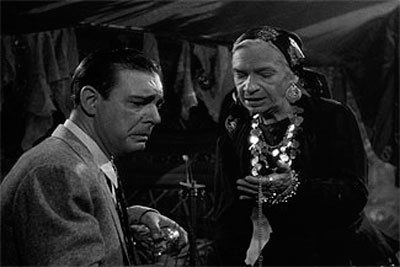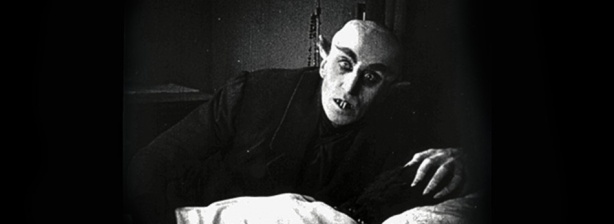
(This was originally written as a part of the Needless Things 31 Days of Halloween series for October 2015. The article was removed from the site along with various other contributions and is now being republished here.)
In this hyper-political age, we’ve seen what seems to be an almost unending debate among the political class of this land over the highly charged topic of immigration reform. Countless hours are spent arguing whether this person or that person should be allowed citizenship for this country, whether still others should even be allowed into the country at all, and of course whether or not we’re giving some “a free pass” to citizenship. But what we have not seen, my friends, is the much more important question addressed. Should these people be able to bring their monsters with them?
Because, let’s face it, until this is addressed they will continue to come, and eventually you will be faced with a kill or be killed situation with a creature that doesn’t follow the rules as you know them. Since we can’t count on legislation, we’ll have to turn to education. To that end, this series will give you the basics on the monsters that you only think you know but in fact play by other cultural rules. Today’s monster is the Romanian Vampire.
Okay, I can see the head-scratching and confused looks from here. We already know, you’re saying to me, the Romanian vampire because we already know about Dracula, and Dracula is the basis for everything about the vampire that we as Americans know about our favorite fanged creatures of the night.

Well, yeah, but you only kind of know anything at all about them. I mean, more than half of you think sunlight kills Dracula and you have to use a special type of wood for the stake you ram into his chest in order for it to work, so you don’t know him as well as you think you do. Also, some of what we know as the Romanian vampire actually came from the Slavic vampire’s roots. This means some of the other stuff you think you know is a little off. There was actually a great deal of mixing and mingling of the traditions back then, so you can’t always look at just one set of traditions while ignoring the others.
Part of the problem with our misconceptions of this creature is that Hollywood took the Dracula of the novel (well, actually of the stage play) and changed him up a bit from what was actually found in the book. For that matter, Bram didn’t exactly play it 100% accurate with the legends either, so what you know from the film is a serious bastardization of a concept that was itself a partial bastardization of the legends and lore. Because of this, if you use the guidelines of the American vampire as your reference point, you might not know what warning signs to look for or what you’re dealing with. You also might die very quickly. The fun bit with that is that you’d die not from using the wrong things to kill the vampire, but rather because you might not realize that you actually have a handy weapon at your fingertips since you’re unaware that it is indeed a vampire slaying weapon.
However, before we get into how one kills the Romanian vampire, let’s take a look at how one becomes a vampire from that branch of the undead family tree. Believe it or not, it’s a process totally different than most of what you think you know.
There are actually two primary forms of the vampire in the regions around Romania. The first version is the living vampire, known to the locals as the strigoi vii. The second, if it wasn’t plainly obvious from the first, is the dead vampire, known to the locals as the strigoi mort.
The strigoi vii were often related to the striga, a form of witch that was most often of the satanic variety. Eventually, the striga could become strigoi vii. Others who could become strigoi vii were people cursed due to living a wicked life or the ever so classic seventh child of a seventh child in a line where the gender was the same through all seven of them. Various other ways existed that could eventually cause one to become a vampire of either form. Some of these were more mundane, such as a young child dying before baptism, while others included having a vampire continually gaze upon a pregnant woman, thus causing her to give birth to a vampire child. Still other ways, becoming a vampire via suicide as just one example, fell in line with what was at the time considered punishments for either a wicked life or wicked act. Interestingly, sharing a trait with the Chinese Vampire, improper burial preparations could lead to the resurrection of the deceased as a vampire.
As you can see, some of the things you might look for as early signs of vampirism with the American vampire, such as the telltale bite marks, would be absent from these stages of vampirism when dealing with some of the Romanian vampire family. While you could have a vampire create a lesser vampire in the ways that most think of in these discussions, more often than not the creation of a vampire was due in part to the many other things Romanian lore laid out and it was very often a form of curse. Going by our classic Universal Monsters, you’d run a greater chance of becoming a Romanian vampire in the same way that Lon Chaney Jr. became a wolfman than the way any of Bela’s victims became vampires.

The range of vampire you might encounter was also somewhat more varied than most Americans tend to believe they might encounter. They could be anything from very human looking to the hideously monstrous, Their disposition and nature could go from very intelligent beings who could think and strategize to mindless creatures who would rise from their grave only to repeat the same basic acts over and over again as if guided by some remnant of their living memory.

This is also primarily the region that the Nosferatu variety of the vampire came from. Interestingly, as a small bit of trivia, the most commonly believed meaning for the word “Nosferatu” is incorrect. Most believe it to mean undead. It doesn’t. The word is an archaic Slavic word derived from an older Greek word that translated roughly as “plague carrier.” I only mention it here as it’s a possibly interesting insight into the nature and/or origins of the oldest vampires of that region as well as some of the possible early roots of the belief in vampirism.
Some of the preventative measures against this vampire should be familiar to you already. Garlic placed around the doors and windows would ward off all but the fiercest and most powerful vampires, but one would have to check on the garlic regularly if one believed that they were an intended victim. After all, the vampire could employ still unturned witches to remove it. Once some vampires were tracked back to their tomb, the thorny branches of a wild rose could be placed on their grave like a mesh or netting. This was a measure that could temporally trap weaker forms of vampires. A more lethal trick, and one that even worked on some vampires of greater strength, was to hammer multiple sharpened rods into the ground at the gravesite. The vampire would then impale itself as it rose to the surface. If unable to procure the required tools quickly enough, one delaying tactic was to put Millet seeds all around the body in the vampire’s coffin or around the grave. Before the vampire could move on, it would first have to eat all of the seed placed around it due to a strange form of undead OCD.
Killing (or mostly killing) the Romanian vampire also had a few familiar techniques, just with a few more options. Decapitation, stuffing the mouth full of garlic, and burying the head and body in two different locations was a tried and true method. Burning the body until it was a flaky ash pile was always an effective technique. Then there was the classic trick of staking the vampire, and this is where you have some expanded options.
The classic wooden stake would do wonders when driven through the heart of many a revenant, or into the ground around and over the grave as mentioned above, but you could also substitute iron for wood. You also didn’t need to aim exclusively for the heart. You see, while staking a vampire in its grave wasn’t always a technique guaranteed to kill every vampire, it could keep them safely stuck in their graves. A long wooden stake or a long iron rod would be driven through the chest or abdomen of the vampire, pinning it to the earth beneath it. If one was concerned that the vampire might still try to free itself, the technique might include rolling the vampire over and onto its stomach before the staking. A very long stake would ensure that the weakened vampire would remain on it for quite some time, and being rolled over in its grave would cause any vampire capable of still attempting to dig its way to freedom to- in its weakened and delirious state -dig itself deeper into the earth rather than rise to the surface.
The weirdest way to our belief of how they could be hurt or killed when weak enough came about with the widespread use of black powder. A steel ball would be fired from a gun into a shallow grave, hopefully striking the vampire in the chest and weakening it.
The overkill method, when you just had to be sure that your vampire was dead and gone for good, was a bit labor intensive. The vampire’s body would be taken out into the woods and staked to the ground. It would then be decapitated and have bulbs of garlic stuffed into its mouth. From there the body would be chopped up into smaller parts, organs removed more or less intact, and the bits and pieces burned into a fine ash.
The ash that remained was seen as the first step towards creating a medicinal. It would be collected by those who know the proper way to do these things, and they would then mix the ash into water to create a curative for any and all harmed by the vampire. See, that thing about killing the vampire to free its victims of their curse doesn’t always come into play here. Sometimes the cure required a few more steps.
There’s another large difference between the American vampire and the Romanian vampire that I only touched on above; the absence of bite marks. The strigoi vii stalking villagers in the Romanian and Slavic lands weren’t blood drinkers. The belief that the earlier legends and stories spoke of blood drinkers came largely from poor translations of somewhat artistically written metaphorical descriptions of the attacks by strigoi vii taken literally. A line about how life would drain from a victim in the way blood drained from the body would get translated into a literal description rather than a metaphorical one.
Their attacks were rarely even seen as fatal, merely debilitating, although that could sometimes be worse. The strigoi vii lived off of stolen life energy. They leeched off a victim’s vital energies through a form of psychic vampirism. Isolated or infrequent encounters might have little ill effect while regular contact could have the same effects of a wasting illness. This need to feed on energy may be related to why one of the things used to hurt the Romanian vampire was iron, a common element throughout history when facing evil spirits or dealing with demonic energies.

Iron was also a tool for warding off the lesser of the striga witches that would assist the strigoi vii. An object made of iron would be placed on a door or above the entrances to a home. This was an older technique of repelling evil that would work its way into common folklore and traditions related to far more than just beings like the striga. Modern cultures view the horseshoe as a symbol of luck. This came from older cultures nailing discarded iron horseshoes to their doors to ward off evil spirits and energies. So if you know anyone who owns a horse, you might want to have a chat with them about home defense supplies.
At around 2,000 words, this is barely even a CliffsNotes explanation of Romanian vampire’s history, legend, and lore. If you’re interested in these creatures, there’s a wealth of information out there on them.
Check out the differences in monsters you only think you know with the following links.
Know Your Monsters – The Chinese Vampire
Know Your Monsters – The Isitwalangcengce
Know Your Monsters – The Lake Monster
Jerry Chandler is a lifelong geek who, while enjoying most everything fandom has to offer, finds himself most at home in the horror, dark fantasy, and science fiction genres. He has in the past contributed to websites like Needless Things, Nerdy Minds Magazine, Gruesome Magazine, and others while occasionally remembering to put up the odd musings on his own blog. He’s been a guest on several podcasts from the ESO Network, on Decades of Horror, and on the Nerdy Laser. He is also a regular co-host on The Assignment: Horror Podcast as well as the primary writer for its affiliated blog.
[…] Know Your Monsters… on Know Your Monsters – The… […]
[…] The Grue-Crew also read listener feedback regarding Episode 73 – Curse of the Undead (1959) from Jerry Chandler and Alistair Hughes. Jerry helps clarify Romanian vampire legends and provides a link to one of his blogposts, Know Your Monsters – The Romanian Vampire. […]